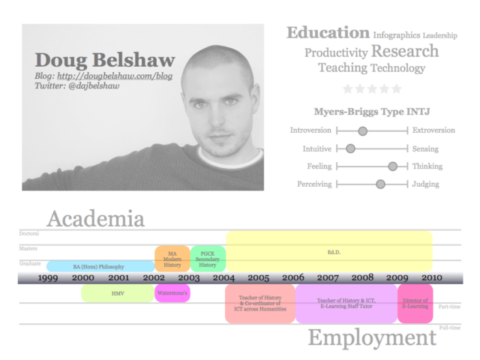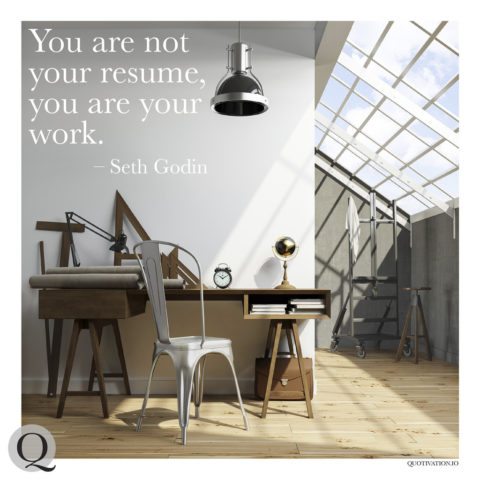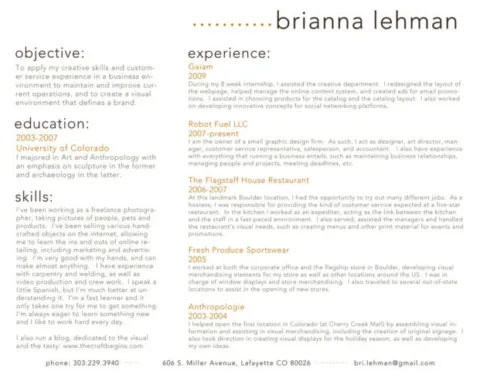Finding a job can be difficult – especially if there are a lot of people applying for the same jobs you’re interested in.
If you spend some time creating a professional resume by tailoring it to the specific jobs that you’re applying for, then you’ll definitely increase your odds of getting an interview.
I’ve spent hours online submitting resumes for jobs where I feel like I’m the perfect candidate only to compulsively check my email for a response — and get NONE!
The reason? I didn’t take the time to personalize and tailor each resume for the exact position I was interested in.
Take it from me, the more you look like you’re a “natural fit” for the company and tailor your resume to that specific job, the better your chances are of getting a callback. So it’s definitely worth taking the time to create a professional resume.
Here are the top 4 things you need to do to ensure top consideration for the position:
#1 – Make Your Resume Easy To Read
The hiring manager is likely receiving hundreds, if not thousands, of resumes for each open position.
So they’ll probably do a quick scan of your resume when it comes in, and they’ll decide right then and there if yours will make it to the “keeper stack” or go to the recycling bin.
You want your resume to stand out from all of the others — in a good way. Here’s how to make sure it does:
- Review grammar and spelling (proofread it twice, not just once).
- Use an eye-pleasing font size (12-point or 14-point size is best).
- Don’t use excessively ornate fonts (good ones are Times, Arial, Verdana, and others).
- Use bullet points and white space (to make it easier to read).
Here are a few more ways to make your resume easier to read.
#2 – Make Your Resume Stand Out
If you’re using a standard resume layout, such as one that comes with Microsoft Word or other software programs that many people use, then your resume probably looks like hundreds of others the hiring manager is looking at.
So you can use a basic template from these programs to give you a good starting point, but then alter the layout a bit to make your resume stand out from the crowd.
There are also some unique resume ideas like including QR codes or a video resume that may be appropriate depending on the job you’re applying for!
Wonder what the best resume format is? It depends on the type of industry you’re entering or job you’re looking for.
For example: Doug Belshaw’s resume states that he studied Infographics Leadership so this wouldn’t be the best resume format to choose if you were applying for a CFO position at a bank.
With any changes you make to the layout, you should take extra steps to ensure that your final resume is error-free and eye-pleasing.
These are the top 5 trends in professional resume writing.
#3 – Make Your Resume Relevant To The Job You’re Applying For
It can be tempting to look through all of the job postings and then send out the same resume to many different employers. This is a big no-no for a successful job hunt.
I can’t tell you how many times I’ve done this — and to no avail. I’d avoid the cover letter all together and not get any type of response (which isn’t surprising)!
Here’s what you should be doing:
- Highlight the key skills and talents that are specified in each job listing.
- Only list the skills that are relevant for that 1 position at the top of your resume.
- Tweak your resume for each position.
- Create 3 or 4 different resumes, each highlighting different skills that are most relevant to those particular positions.
These tips may seem time-consuming, but they will drastically increase your chances of getting an interview if you tailor your resume to the job you are applying for.
You’ll still need to do some light tweaking of the resume before you send it out for a specific job, but having a couple of different resume versions to choose from will be a time-saver for you.
If there’s a trait or experience that is listed as highly important for a particular job, then clearly state that you have similar traits or experience that would benefit the company. Don’t be fooled into thinking “dumbing down” your resume is a good idea.
Here’s how to customize your resume for each different job you’re applying for.
#4 – Make Sure To Use Job-Specific Keywords In Your Resume
Did you know that many hiring managers don’t actually look at your resume until after it has made the first cut?
Why is that? Well, talk about technology being king — the first cut in the hiring process these days is more often done by scanning software, which scans your resume for specific keywords that the employer is looking for.
While it may be great that you are detail-oriented and a team player (note: everyone says they are), often more specific phrases that are relevant to the job stand out.
These phrases may include specific computer programming languages you have knowledge of, previous job functions you’ve done (such as being a nursing supervisor), certifications that are relevant to the job, and so on.
You can get a good idea of what keywords will be searched for by:
- Carefully reading through the job posting.
- Highlight the specific job requirements.
- Search the job title/description on Google and jot down additional keywords used.
By following these tips, you’ll have an outline for keywords that you should include in your resume. The more keywords you can use in your resume, the more relevant your resume will appear to be.
These are the 25 best keywords to include in your resume.
Need More Professional Resume Tips?
In addition to the links I’ve included above, here are some additional resources to help you create a professional resume:








